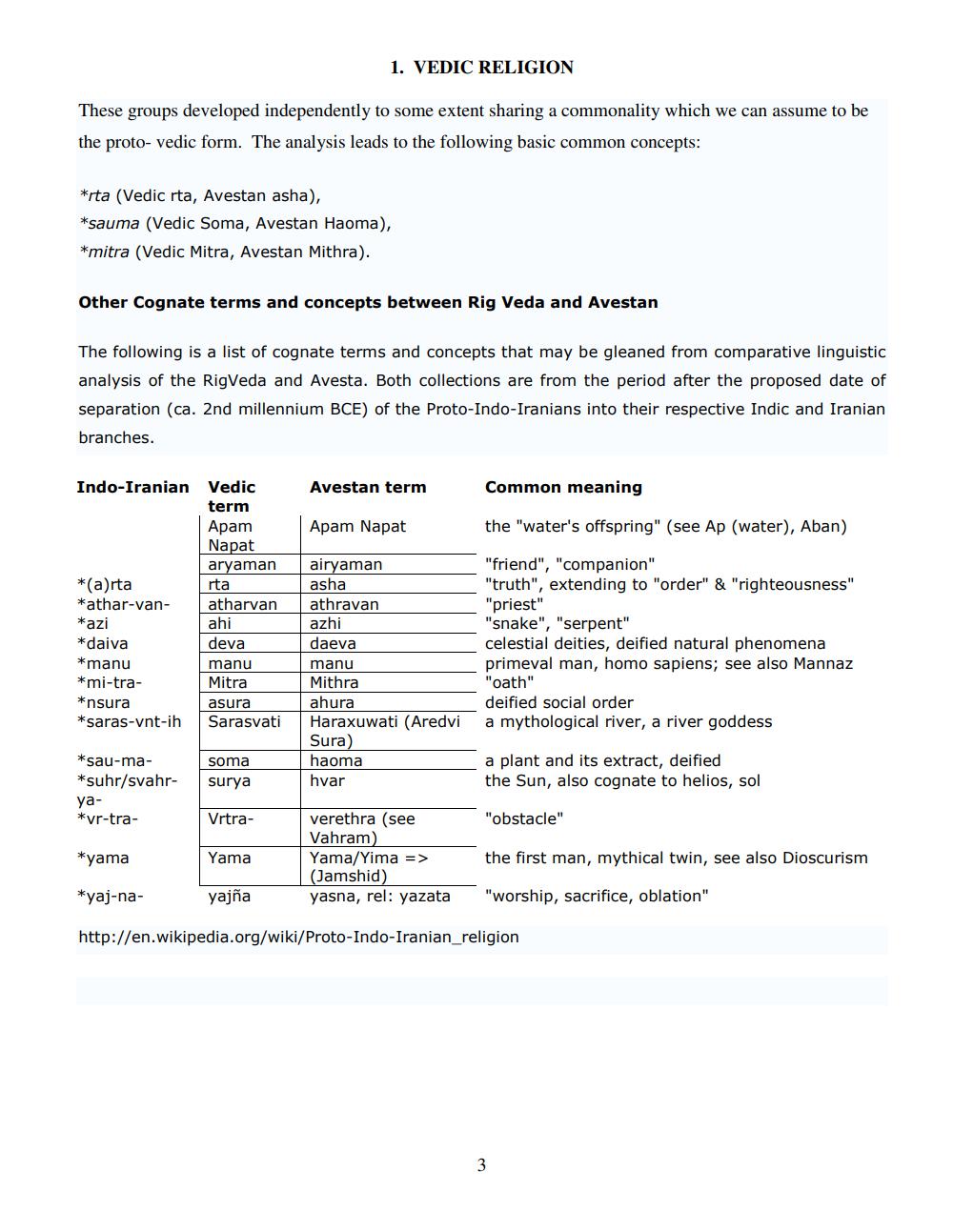Book Title: Development of Hinduism Author(s): M M Ninan Publisher: M M Ninan View full book textPage 7
________________ 1. VEDIC RELIGION These groups developed independently to some extent sharing a commonality which we can assume to be the proto- vedic form. The analysis leads to the following basic common concepts: *rta (Vedic rta, Avestan asha), *sauma (Vedic Soma, Avestan Haoma), *mitra (Vedic Mitra, Avestan Mithra). Other Cognate terms and concepts between Rig Veda and Avestan The following is a list of cognate terms and concepts that may be gleaned from comparative linguistic analysis of the Rigveda and Avesta. Both collections are from the period after the proposed date of separation (ca. 2nd millennium BCE) of the Proto-Indo-Iranians into their respective Indic and Iranian branches. Indo-Iranian Avestan term Common meaning Apam Napat the "water's offspring" (see Ap (water), Aban) Vedic term Apam Napat aryaman rta atharvan ahi deva manu *(a)rta *athar-van*azi *daiva *manu *mi-tra*nsura *saras-vnt-ih airyaman asha athravan azhi daeva manu Mithra ahura "friend", "companion" "truth", extending to "order" & "righteousness" "priest" "snake", "serpent" celestial deities, deified natural phenomena primeval man, homo sapiens; see also Mannaz "oath" deified social order a mythological river, a river goddess Mitra asura Sarasvati soma surya Sura) haoma hvar *sau-ma*suhr/svahrya*vr-tra a plant and its extract, deified the Sun, also cognate to helios, sol Vrtra "obstacle" *yama Yama verethra (see Vahram) Yama/Yima => (Jamshid) yasna, rel: yazata the first man, mythical twin, see also Dioscurism *yaj-na yajña "worship, sacrifice, oblation" http://en.wikipedia.org/wiki/Proto-Indo-Iranian_religion 3Page Navigation
1 ... 5 6 7 8 9 10 11 12 13 14 15 16 17 18 19 20 21 22 23 24 25 26 27 28 29 30 31 32 33 34 35 36 37 38 39 40 41 42 43 44 45 46 47 48 49 50 51 52 53 54 55 56 57 58 59 60 61 62 63 64 65 66 67 68 69 70 71 72 ... 582
